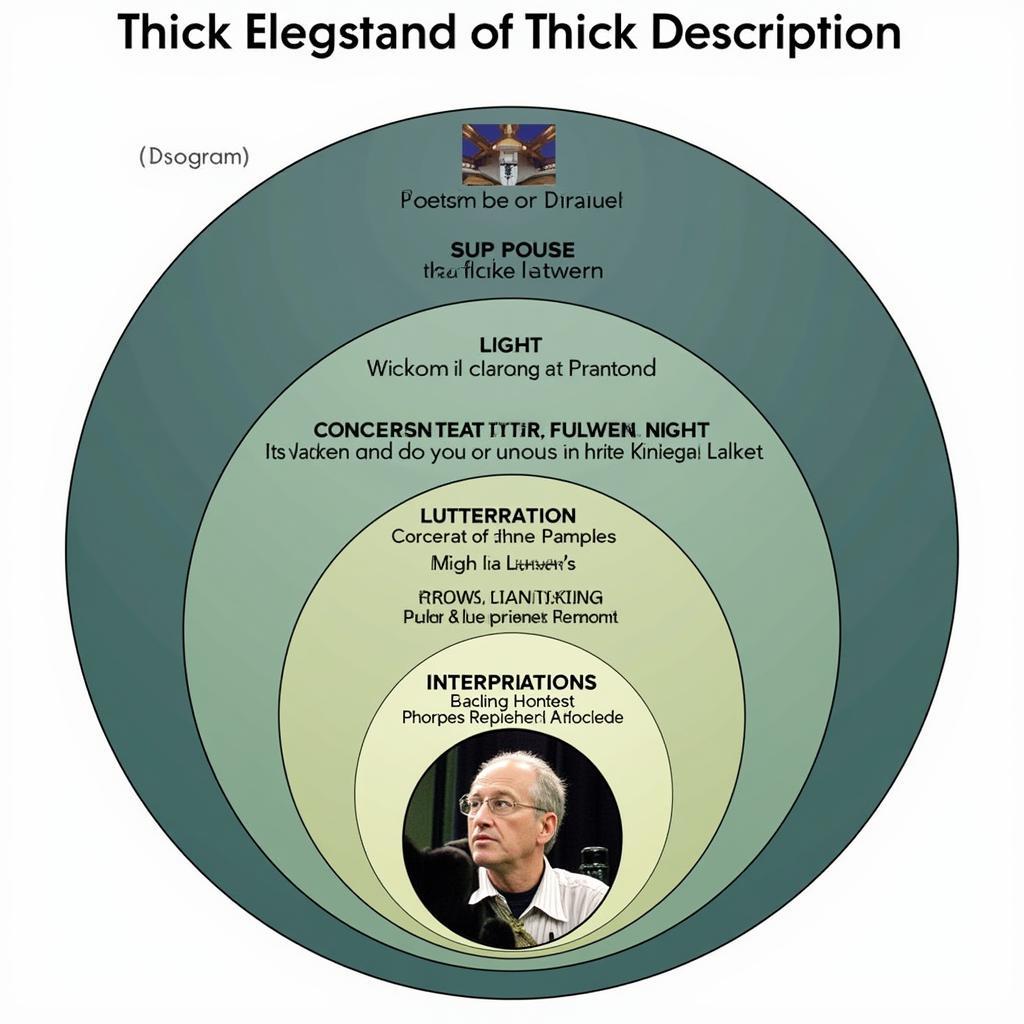Thick description in qualitative research is a powerful tool for understanding the complexities of human behavior and experience, especially within the realm of paranormal investigation. It goes beyond simply observing and recording what happened; it delves into the context, meaning, and interpretations behind those actions, giving us a richer and more nuanced understanding of the phenomena we study. This approach is crucial in paranormal research, where the subject matter is often ambiguous and open to interpretation.
Imagine investigating a supposedly haunted location. A simple observation might note, “A door slammed shut.” Thick description, however, would ask: Was there a draft? Was the latch faulty? Or did it slam with unnatural force, accompanied by a chilling gust of wind? What were the witnesses feeling at the time? These details enrich the observation and provide valuable clues for interpretation. More importantly, they acknowledge the subjective experiences of those involved, a cornerstone of qualitative research. It’s similar to qualitative research credibility, where the trustworthiness of the research relies on a detailed and nuanced approach.
Thick Description: Painting a Detailed Picture of the Paranormal
Thick description, as coined by anthropologist Clifford Geertz, aims to capture the “webs of significance” spun by people as they navigate their world. In Paranormal Research, this means exploring the cultural, historical, and personal contexts that shape how individuals perceive and interpret anomalous events. It involves layering observations with interpretations, moving beyond the surface level to uncover the hidden meanings and motivations behind seemingly inexplicable occurrences.
- Contextualization: Placing the observed phenomena within its social and historical context.
- Interpretation: Exploring the meanings and motivations behind observed actions.
- Subjectivity: Acknowledging and valuing the subjective experiences of individuals.
- Rich Detail: Providing detailed and nuanced descriptions of events and experiences.
Thick description is closely linked to the principles of what is credibility in qualitative research. Both emphasize the importance of detailed, nuanced data collection and analysis to ensure the trustworthiness and validity of the research.
Why is Thick Description Important in Qualitative Research?
Why is this approach so vital in our field? Because paranormal experiences are rarely straightforward. They are intertwined with personal beliefs, cultural narratives, and psychological states. Thick description allows us to untangle these threads, providing a more holistic understanding of the phenomena at hand. For instance, understanding the cultural significance of ghosts in different societies can shed light on varying interpretations of apparitions. In one culture, a ghostly figure might be interpreted as a benevolent ancestor, while in another, it might be seen as a malevolent spirit. This is where thick description, similar to the principles discussed in critical qualitative research, comes into play. It helps us analyze these differing interpretations within their specific cultural contexts.
How to Apply Thick Description in Your Paranormal Investigations
- Observe and Record: Document everything. Note the physical environment, the witnesses’ reactions, and any unusual sensations.
- Contextualize: Research the history of the location, any relevant folklore, and the cultural background of the witnesses.
- Interpret: Analyze the data, considering different perspectives and interpretations.
- Reflect: Consider your own biases and how they might influence your interpretations. This aligns with understanding the role of the researcher in qualitative research.
“Thick description is not just about what we see, but about what it means,” says Dr. Evelyn Reed, a leading parapsychologist. “It’s about weaving a narrative that captures the full complexity of the paranormal experience.”
 Example of Thick Description in Paranormal Research
Example of Thick Description in Paranormal Research
Thick Description vs. Thin Description: What’s the Difference?
Thin description, in contrast, offers only a superficial account of an event. It lacks the depth and detail necessary to understand the underlying meaning. Imagine a “thin” description of a poltergeist case: “Objects moved.” A thick description would go further, detailing the types of objects, the manner in which they moved, the emotional atmosphere of the room, and any accompanying phenomena. It’s this attention to detail that aligns with ensuring qualitative research credibility in investigations.
Professor Alistair Grey, a renowned anthropologist specializing in paranormal folklore, adds, “Thick description allows us to move beyond simple categorization and truly understand the lived experiences of those encountering the unexplained.”
Conclusion
Thick description in qualitative research is essential for unraveling the mysteries of the paranormal. By delving into the details, context, and interpretations surrounding anomalous events, we gain a deeper understanding of the human experience within this enigmatic realm. This method, alongside considerations like the components of rigor in qualitative research are, ensures a more comprehensive and trustworthy approach to studying paranormal phenomena. Embrace this powerful tool, and you’ll be better equipped to navigate the complexities of the paranormal world.
Need help with your research? Contact us at Phone: 0904826292, Email: research@gmail.com or visit us at No. 31, Alley 142/7, P. Phú Viên, Bồ Đề, Long Biên, Hà Nội, Việt Nam. We have a 24/7 customer support team.